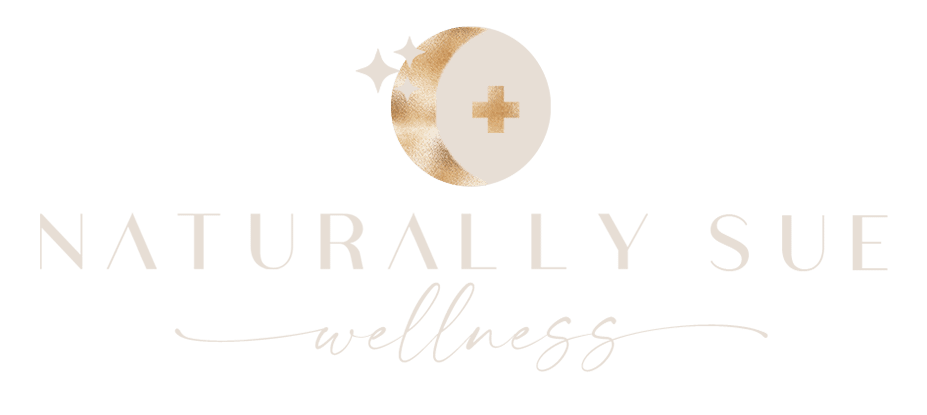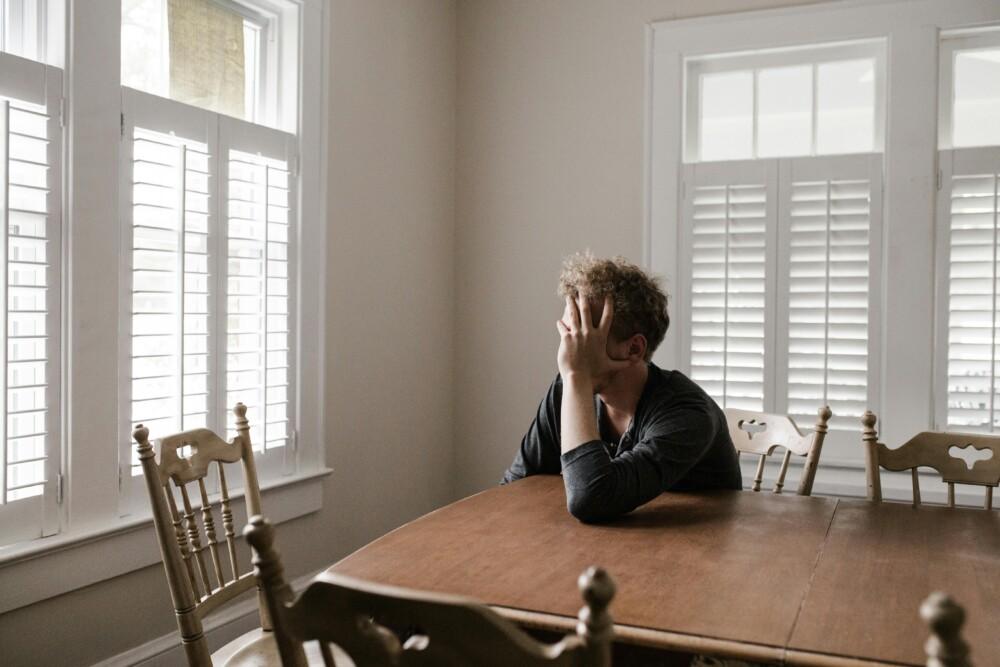What Constitutes Holistic Prevention for Osteoporosis in New York?
Individuals in New York can opt for holistic prevention for osteoporosis by implementing strategies to help support your bones. These integrate different approaches, such as nutrition, exercise, and herbal remedies to support bone remodeling and retention of bone mass. With the limited sunlight exposure, chronic stress, and sedentary lifestyle, bones need help to retain their density.
Osteoporosis is a common condition and often is silent, meaning we may not know we even have it. This is why it’s crucial to implement strategies to help prevent, as well as making sure measures are in place for early detection.
Osteoporosis patients choose the holistic route because it encompasses systemic fortification, going to the root of the problem.
The age-adjusted prevalence of osteoporosis among adults aged 50 and over in the U.S. increased from 9.4% in the 2007–2008 period to 12.6% in the 2017–2018 period. This does represent a significant upward trend over the decade, which is why prevention is so important.
This is particularly important for people leading indoor-centric lifestyles. Low-sunlight exposure limits vitamin D synthesis, which is essential for calcium absorption and mineral deposition. It is why studies at Honghui Hospital, Xi’an Jiaotong University show that 28-41% people have vitamin D deficiency. Many New Yorkers are working in corporate type jobs with limited access to sunlight.
Holistic approaches are about more than taking calcium supplements to correct the damage. Naturopathic plans ideally look to reduce bone loss risk and support bone strength. With time, osteoblast activity improves, and the bones become stronger, reducing the chances of broken bones and other forms of discomfort.
How Do New York Habits Accelerate Bone Density Decline?
New York habits accelerate bone density loss through indoor lifestyles and poor diets, which chip at bone health. These habits reduce osteogenic stimuli and erode the trabecular structure, leading to early bone loss. Osteoporosis urban prevention becomes an important tool to maintain proper osteoblast activity.
Below are some common habits that accelerate osteoporosis in New York:
Plenty of people in New York live in high-rise buildings, where light only passes through the window. Glass blocks out almost all UVB light, which the body needs for Vitamin D synthesis. With many people working from home or in a closed office during daylight hours, this eventually leads to hypovitaminosis D which negatively impacts the bone.
New York living involves long hours of sitting at the office desk, on commutes, and even on the couch as you relax. When the bones are inactive, they no longer have the mechanical stimulus, so the osteocytes don’t signal for bone remodeling. Weight bearing and resistance treating helps manage bone, which is why being sedentary often can contribute to the condition.
The chaotic diets of city living make NYC dwellers more susceptible to deficiencies. Studies at East Tennessee State University show that large metro residents are 49% more likely to have a vitamin D deficiency compared to rural dwellers, who sit at 20%.
On the go type diets including bagels, fast food, high quantities of coffee and takeout rarely meet mineral needs that are needed for bone health. These include protein, Calcium, Vitamin D, K, magnesium, etc. Combined with low sunlight exposure, the bones can become weaker by the day. This is why it is ideal to aim for a nutrient dense diet.
Can Limited Sun Exposure in NYC Deplete Bone-Supporting Vitamins?
The seasonal changes and dense architecture of NYC cause direct sunlight to barely reach the skin.
Limited sunlight exposure depletes bone-supporting vitamins because it creates a vitamin D bottleneck and triggers resorptive cascades. Sunlight exposure generates vitamin D precursors needed for bone mineralization and calcium balance.
“Limited sun reduces cutaneous vitamin D production; vitamin D helps calcium absorption and bone mineral balance.”
Here’s what happens when NYC dwellers don’t get enough sun exposure:
- Poor Cholecalciferol Synthesis: Low UVB exposure means the body does not produce sufficient cholecalciferol (vitamin D3). This keeps the body from efficiently absorbing calcium into the body. Even if you are on a calcium-rich diet, absorption won’t happen if there’s not enough vitamin D, leading to a mineral deficiency that starves the bones.
- Parathyroid Hyperactivity: Low levels of vitamin D trigger your parathyroid glands to create more parathyroid hormones (PTH). Higher PTH levels move the calcium from the bones into the bloodstream, so it keeps proper serum calcium levels. This compensatory process erodes the trabecular structure gradually, weakening the internal bone scaffold.
- Mechanical Understimulation: Osteoblasts have their own vitamin D receptors. When 1,25-dihydroxyvitamin D (the active form of vitamin D) binds to them, it signals the body to create proteins such as osteocalcin. When combined with factors like sedentarism, the body goes through understimulation, and the osteoblast-driven mineral deposition slows.
Low sunlight exposure becomes more problematic as the cold season arrives in New York. Sunlight angles between November and March are too low to promote effective synthesis, daylight hours are shorter, and clouds are constantly covering the skies. Cold weather also discourages outdoor activities, leading to understimulation and biomechanical depletion.
What Remodeling Processes Does Naturopathy Enhance for Bone Strength?
Nutrition and lifestyle can support the anabolic (bone-building) pathway and moderates the catabolic (bone-breaking) process to support bone remodeling. This restores harmony between osteoblasts and osteoclasts, maintaining mineral homeostasis. With time, the regenerative rhythm of the bone is strengthened.
Here is how the two pathways work:
- Anabolic Side: Nutrition and lifestyle supports Wnt signaling, a communication pathway that influences bone formation and osteoblast maturation. This leads to a robust hydroxyapatite deposition, giving bones their strength.
- Catabolic Side: Certain anti-inflammatory herbs or polyphenols encourage RANKL inhibition, which is a molecule that signals osteoclasts to break down tissue. The right herbs decrease bone resorption rates and temper bone loss.
Holistic bone remodeling mostly relies on nutrient interaction. For example, calcium builds the mineral foundation, but it’s vitamin K2 that sends it into the matrix (this prevents vascular calcification). Magnesium stabilizes the hydroxyapatites, encouraging ATP production and adapting its architecture to urban living.
How Can Hormonal Support Prevent NYC Bone Loss?
Hormonal support may help prevent bone loss in NYC dwellers by stabilizing the hormonal milieu and halting excessive bone resorption. This is important in urban areas, where high levels of stress lead to hormonal disruption, especially in menopausal women.
Studies at the Near East University School of Medicine show that 1 in 3 women in their 50s will experience an osteoporotic fracture at least once in their lives, compared to 1 in 5 men. This is because perimenopausal and menopausal women are more likely to have hormonal imbalances that affect the bones.
Here is how different hormones interact with bone health:
- Estrogen: Inhibits osteoclast excess resorption while supporting osteoblast survival. It also downregulates RANKL, maintaining a balance between bone formation and breakdown.
- Testosterone: Promotes the expansion of the periosteal (outer bone) layer, along with cortical bone growth. This protects against cortical thinning, which is one of the main causes of bone fractures.
- Cortisol: A glucocorticoid released in response to stress, cortisol inhibits the formation of osteoblasts while increasing osteocyte apoptosis (cell death). It also influences calcium absorption, affecting bone density even when you are on a balanced diet.
This matters to urban dwellers because estrogen, testosterone, and cortisol levels are influenced by sleep, lifestyle, and nutrient intake. Factors like pollution, chronic stress, and urban commutes blunt the bone medical loading and contribute to osteoporosis.
For women who are peri-/postmenopausal, you can discuss Bioidentical Hormone Replacement Therapy BHRT with your prescribing clinician to see if you would benefit.
Some plant compounds may support symptoms and provide overall better quality of life, but are not a replacement for hormone replacement therapy. You may also be a candidate to combine herbal medicine with your BHRT. Talk to your doctor and always include stress reduction techniques and good nutrition, for less bone loss in the long run.
Which Nutrients Fortify Bones Against Urban Wear in New York?
Compounds like calcium citrate, vitamin K2, and magnesium glycinate are natural osteoporosis nutrients that facilitate hydroxyapatite formation. This counters demineralization, especially when used synergistically with vitamin D (whether in supplement form or sunlight exposure).
Here’s how they work and where you can find them:
Calcium citrate is a better alternative to calcium carbonate because it is more easily absorbed. This is especially beneficial for aging individuals or osteoporosis patients who have low stomach acid. This is administered through natural supplements or by adding the following foods to your diet:
- Dairy (fortified milk, yogurt, and cheese)
- Plant milks (oat, soy, almond)
- Leafy greens (collard greens and kale)
- Canned fish with bones
- Tofu
- Fortified cereals
Harvard Health studies recommend a daily dose of 1,200 mg of calcium per day for women ≥50 (diet + supplements) to maintain proper bone density.
800–1,000 IU/day vitamin D would also be combined, however this would be individualized by labs and diet.
However, the exact amount and need for supplements is determined by a naturopath based on your deficiency levels after labs, as well as any specific factors that would impact the dosage recommended.
Vitamin K2
Vitamin K2 encourages osteocalcin production, a protein that binds calcium to the bone matrix. Dietary patterns frequently skip foods that are richest in K2, which include the following:
- Natto
- Fermented foods (natto, kimchi, sauerkraut)
- Specific cheese types like brie, Gouda, and Edam
- Chicken liver
- Organic egg yolks
Supplementation is a useful tool to ensure you get enough vitamin K2 in your system.
Check interactions with anticoagulants.
Magnesium has a role in more than 300 enzymatic reactions, one of which is hydroxyapatite crystallization. Magnesium glycinate is the preferred form, as it causes minimal gastrointestinal upset. However, some people prefer citrate if they lean more toward constipation. You can find it in the following sources:
- Nuts and seeds (pumpkin seeds, cashews, almonds)
- Legumes (chickpeas, kidney beans, lentils)
- Leafy greens (Swiss chard, spinach, kale)
- Whole grain (quinoa, brown rice, oats)
- Avocados
- Dark chocolate (at least 70% cacao)
Magnesium works in full synergy with vitamin D and calcium to promote bone mineralization, along with proper mineral deposition.
Are Plant-Based Sources Effective for NYC Bone Mineralization?
Plant-based sources are effective for NYC bone mineralization because they promote osteocalcin activation and proper osteoblast function. Sources such as leafy kale and almonds supply bioavailable minerals that are relatively well-absorbed and promote proper hydroxyapatite formation.
Nutrients from plants like fortified plant milk, legumes and seeds can support vitamin D synthesis when sun exposure is low.
Some UV-exposed mushrooms provide vitamin D2; many plant foods are fortified with vitamin D. Sunlight/supplements remain primary sources.
They are also packed with phytonutrients and antioxidants, which improve fat-soluble vitamin absorption. This is beneficial because it improves bone metabolism.
Plant-based sources need some planning, as the calcium levels are lower compared to animal-based products. However, when used alongside mechanical bone loading (e.g., resistance exercises and stair climbing) and supplementation, they contribute to good bone density even on a vegan diet.
Can Collagen Supplements Aid Joint-Bone Interfaces?
Collagen peptides may serve to support joint comfort. In some studies, bone turnover markers. Bone mineral density is modest and inconsistent. Use alongside protein, calcium, vitamin D, and training
The periosteal layer and synovial interfaces need collagen-rich connective tissue.
Type II collagen, found mostly in the cartilage, has an important role in reducing breakdown, transmitting the load, and stabilizing the structure.
Other collagen types, such as Type I collagen, are also important components of the bone matrix. Supplements reinforce the connective matrices and improve load-bearing capacity.
Undenatured Type II collagen works through the immune-modulation route of the joint cartilage. This reduces inflammation and premature degradation, reinforcing the connective matrices.
How Do Weight-Bearing Activities in NYC Build Bone Density?
Weight-bearing exercises in NYC build bone density by using gravity to stress the bones. This stimulates osteogenesis, where the cells create more bone tissue and increase peak mass. Regular activity increases bone density with time.
Wolff’s law suggests that the bones structurally adapt when forces are placed upon them. In other words, if you apply a load on them, the bones get stronger. If you don’t, then the bones become weaker.
Weight-bearing exercises also have a piezoelectric effect on the bone. When the bone goes under mechanical stress, it triggers small electrical potentials within the bin tissue. This signals the osteoblasts to reinforce the bone structure by depositing more minerals. This is the body’s way to adapt to the changes placed upon it.
Aim for 2-4 weight-bearing exercise sessions every week. On the days in between, perform light movement like walking and jogging.
What Urban Alternatives Exist for Impact Loading?
Urban alternatives like taking the stairs and resistance climbing mimic gravitational forces and facilitate consistent practice. Busy individuals with osteoporosis can take measures to load their bones even when they are at home or commuting to their workplace.
Below are several city-accessible exercises that New Yorkers use to build bone density:
- Stair Climbing: Rather than taking the elevator or escalator, take the stairs whenever you can. When at home or at the office, repeatedly climb and descend the stairs in short bursts. This puts the femur and hip regions under gravitational force.
- Resistance Bands: Perform exercises like lunges, squats, and overhead presses with resistance bands. This generates mechanical strain that encourages bone formation. They are also low-cost and apartment-friendly.
- Gentle Jumping: Small hops or lateral skater jumps create a high load within a short burst, which has osteogenic potential. Go for gentle movements or use a padded surface (or a rig) if you have joint issues.
- With that said, it is important to make sure you choose weight-bearing/resistance work that’s safe for your fracture risk. These include things like walking, stairs, resistance bands, supervised strength. It is essential you avoid high-impact if you have osteoporosis or high fracture risk. Talk to your doctor.
Ideally aim for 2–3 sessions/week of resistance + weight-bearing training, plus daily movement.
Take your environment into mind. If the weather is bad or you have limited space, choose resistance bands. If it’s nice outside, hit the stairs at the park (or any other outdoor stairs).
What Stress-Reduction Techniques Prevent Bone Loss in New York?
Yoga can not only be amazing to support your nervous system and stress, but it can also improve balance, strength, posture, and fall-risk. These are all supportive for bone health.
Consider the following stress reduction techniques:
- Meditation for HPA Regulation: 10-14 minutes a day of guided mindfulness or seated meditation
- Biofeedback: Breathing apps or biofeedback devices to become aware of the psychological stress response and activate parasympathetic dominance
- Sleep Hygiene: Getting at least 7-8 hours of sleep per night while making the most of daylight exposure to improve cortisol rhythm
- Regular Movement: Physical movement, however small, increases dopamine, which decreases cortisol levels
Chronic stress suppresses osteoprotegerin and stimulates RANKL expression, which causes bone resorption. Relaxation techniques diminish the effects and protect the bones in the long run.
What Benchmarks Signal Holistic Bone Health Success in NYC?
It’s important to track DEXA (T-/Z-scores) for bone density and use FRAX® to estimate 10 year fracture risk. This helps to
Patients notice improvement and stability within 1-2 years after starting the treatment, with the appropriate adjustments in seasonal shifts.
Monitoring NYC seasonal vitamin D recovery helps identify if your dose needs to be adjusted with corresponding diet/sun recommendations. Treatment is considered successful when levels remain constant between summer and winter, thanks to the appropriate approach.
How to Launch Holistic Osteoporosis Prevention in New York?
Patients with osteoporosis can begin holistic osteoporosis prevention in New York by contacting a local naturopath. Naturally Sue Wellness, the telehealth practice of Dr. Susan Cucchiara, offers prevention by identifying vulnerability points, constructing a robust framework based on your needs.
Naturally Sue Wellness offers continuous monitoring and reassessments to adjust your plan, if necessary, based on your response. Telehealth options are also available to make it convenient for New Yorkers, as well as those out of state.






